As we complete our journey along the abandoned Upper Harlem Division, it is worth taking a moment to look at the timetables printed for the line. The Upper Harlem’s timetables were New York Central’s Form 112 – and its size changed drastically over the years, reflecting the railroad’s slow death.
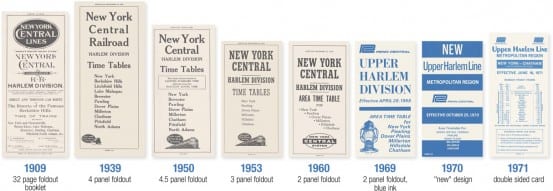
The ever changing timetable design for the Upper Harlem ((All timetables from the author’s collection))
A 1909 timetable, which was actually a foldout booklet that contained descriptions of the stations and schedules for connecting railroads, was actually 32 pages. The tall size seen in a later 1939 timetable was standard for many years, and it featured the additional trains offered beyond Chatham to Pittsfield and North Adams. Many changes came in the 1950’s – timetables got smaller when the North Adams service was cancelled, and by 1953 the four panel foldout was reduced to three panels. By the time the Upper Harlem Division’s passenger service was cancelled in 1972, the line timetable was just a double sided card, reflecting the only two trains that operated on the line every week day.
Moving on, we continue our tour north of Hillsdale, heading towards Craryville. For much of its route, the Harlem Division follows New York State Route 22 northward, but after arriving at Hillsdale the route turns in a westward direction to follow Route 23.
When the Harlem Railroad was established through Columbia County, the station here went by the name of Bains, for hotel owner Peter Bain. When the land was purchased by Peter Crary, the station became known by a new name – Craryville. Gail Borden, who constructed his first successful milk factory along the Harlem in Wassaic, also had a processing plant here in Craryville. This was one of many plants located along the line, and used it for freight. ((Postcards from Craryville from the author’s collection))
Craryville Today
Craryville is a relatively quiet area, with little reminder of the railroad beyond a barely paved Railroad Lane. The old station house still exists, but is privately owned.
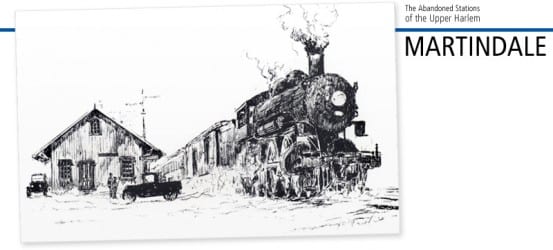
Harlem Division engineer Vic Westman was quite the talented artist, creating many drawings and even paintings of the rails he worked, sometimes just from memory. For many years he even had a small studio on the sixth floor of Grand Central Terminal in which to work during his long swing time. ((Sketch of Martindale by Vic Westman for Lou Grogan’s book.))
The name Martindale derives from John Martin, on whose land the original Martindale station was built upon. It was never an extremely prominent station, and by 1946 it was just a mere flag stop on the line. Martindale met its end years before the rest of the line, and was eliminated in 1949. The station building itself was dismantled by a railroad employee in that year.
Martindale Today
South of where Martindale station was lies an overpass where the railroad traversed over Route 23. Little else in the area reflects the area’s railroading past. In fact, little even bears the name Martindale besides the Martindale Chief diner, located next to the Taconic.
About 119 miles from Grand Central is the station of Philmont. Philmont was historically one of the larger communities that that the Harlem ran through, and was rich with industry. Several mills were located in the town, and they of course used the railroad for freight. ((Postcard of Philmont at left from the collection of Steve Swirsky. Postcard at right from the author’s collection))
Philmont Today
Besides Railroad Avenue, and the former railroad hotel located upon it, it is hard to tell that a railroad once crossed Main Street here in Philmont. The Empire House, the aforementioned railroad hotel, lacks the porches it had in historical images and may be a bit beat up, but it is one reference to the railroad that ran through town.
The Arch Bridge
Leaving Philmont, about three miles north of the station, but in the town of Ghent, lies a street named Arch Bridge Road. The eponymous arch is a single lane underpass, with the railroad’s former ROW running above. Running along the side of the arch is a small stream where, at some point over the years, some of the railroad’s roadbed washed out. It is a nice vestige of the railroad in Ghent, and most certainly an old one.
Just under 125 miles from Grand Central lies the second to last station on the Harlem – Ghent. The station itself was shared with a short branch of the Boston and Albany. The railroad crossed over New York State Route 66 just south of the station.
Ghent Today
Splitting off from Route 66 at the center of Ghent is Railroad Avenue, which still exists today, although with no railroad to be seen. Appearing in many historical photos of the station is the Bartlett House, which was a railroad hotel, and still stands today.
The end of the Harlem Division, just a bit more than 127 miles from Grand Central Terminal, is in Chatham, New York. The Harlem met with the Boston and Albany and the Rutland Railroad here, and the former two shared a quite beautiful Union Station. Stylistically, the station’s Richardsonian Romanesque aesthetic matches more to the Boston and Albany than it does to the Harlem, but it is attractive nonetheless. Built in 1887, Chatham station was designed by Shepley, Rutan and Coolidge, the successors to famed American architect Henry Hobson Richardson.
The New York and Harlem Railroad always seemed to be a modest affair. Some railroads chose grandiose names for themselves, dreaming of the locations that they would one day reach (and often fell short of – the New York, Boston and Montreal Railway comes to mind), but when it was chartered in 1831, the Harlem only planned to be a link from the core of New York City to Harlem just a bit further north. The original plan was to connect with the New York and Albany Railroad at Harlem – except that railroad was never completed. In their absence, the Harlem was granted the right by the state legislature to build into Westchester in 1840, and all the way to Albany in 1846. Despite that right, the Harlem gradually extended north, and instead chose Chatham to be its terminus. From there, riders could easily continue to Albany on the B&A, and some of the earliest timetables show the trains on this additional route.
Chatham Today
For over a hundred years the railroad has been an important part of Chatham’s identity. Though both the Rutland and the Harlem are gone, the Boston and Albany’s former line still runs through Chatham, owned by CSX. The trains may run through, but they don’t really stop here – though the town seems to firmly hold onto their railroad identity. A fence has been put up to separate the former Union Station from the remaining tracks, which somewhat mars the attractive vista of yesteryear. The building had significantly fallen into disrepair by the ’60s, but it has been restored to glory and is the home to a branch of the Kinderhook Bank.
The very end of the Harlem’s tracks still exists, and extends around a half mile south, where they abruptly end in front of a gas station. The mile marker for mile 127 – the end of the Harlem – has been saved and transplanted to a garden in front of the Chatham firehouse.
Then and Now
As we’ve seen on our tour of the former stations of the Upper Harlem Division, many of the locales have changed drastically over the 41 years that passenger service has been absent. But two towns along the route provide an interesting look back and allow us to compare today and yesterday. Both Philmont and Ghent had railroad hotels that were established close to the tracks. Because of that proximity to the rails, the buildings appear in many old photos – which makes a comparison especially moving. The two hotels may have come to town because of the trains, but they managed to outlive the demise of the Harlem itself.
Philmont’s Empire House was built sometime in the 1880’s, and also included an Opera House. After the hotel was long gone, the building was converted to serve as a textile manufacturing facility. At some point in the ’60s Philmont’s American Legion purchased the building. They added a 30 foot by 70 foot section to the building, which included a kitchen. Due to the post’s declining membership, the members voted to put the building on the market in 2009.
Though the main structure of the building is similar to the above historical view, the original porches are gone from the building. The addition made by the American Legion is also apparent to the left of the building. The building itself gives us a point in which to gather our bearings, and highlights the absence of the railroad, and the old rail depot.
Ghent’s Bartlett House was likewise a railroad hotel, built in the 1870’s, and recently nominated for the National Register of Historic Places. The hotel hosted teachers, traveling salesmen, and plenty of other rail passengers – it was even captured by the lens of famed photographer Walker Evans. Besides the hotel, the building contained a dining room and a ballroom, occasionally the site for brawling politicians. Though part of the building is blocked by the train in our historical photo, the Bartlett House looks very much as it did when first built – in 2011 the front porch was redone based upon historical photos.
That pretty much wraps up our tour of the Upper Harlem Division’s stations. Many of the physical stations may be gone, but there is surprisingly quite a bit that can be found that reminds us that there was a real railroad that once ran through here. In fact, much of the former route can be seen visually from satellite maps – there is an obvious swath of barren land that marked where the rails once were. That, of course, may one day fade. But if the Harlem Valley Rail Trail Association has their way, the entire route of the former Upper Harlem Division will at least be preserved as a trail, which I suppose is better than being forgotten entirely.


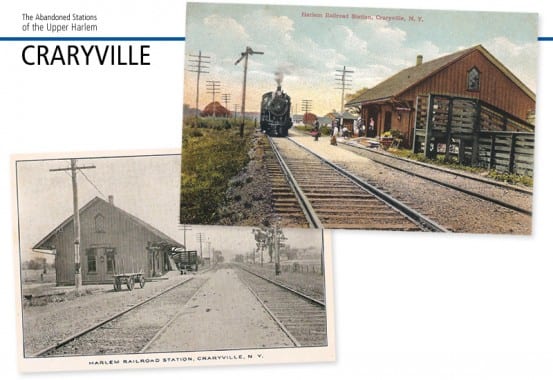
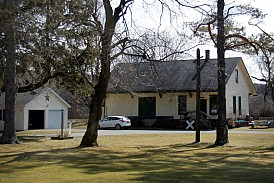
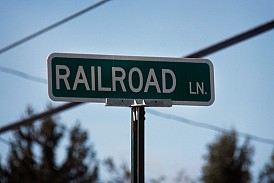
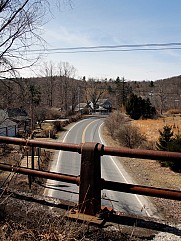
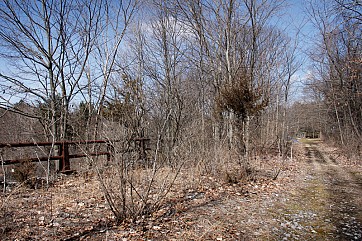
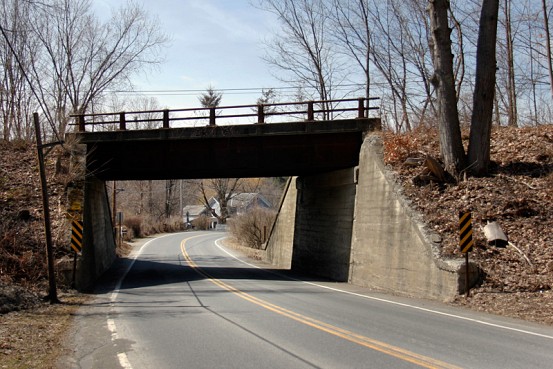
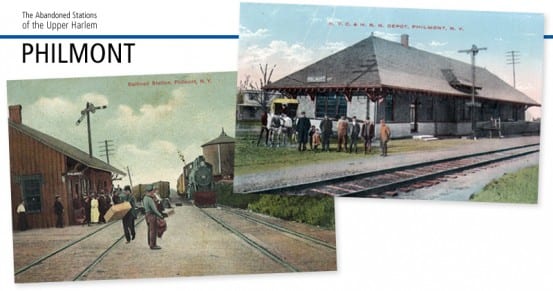
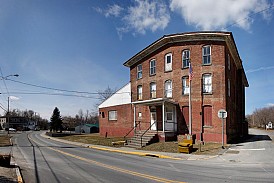
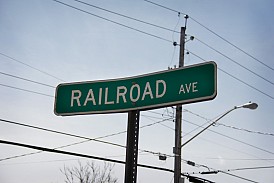
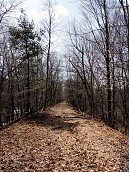
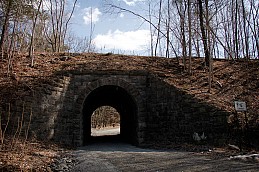
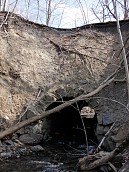
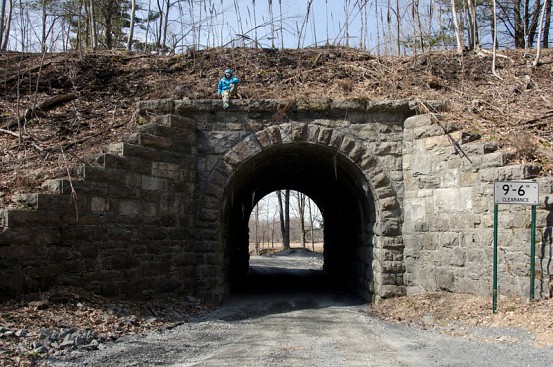
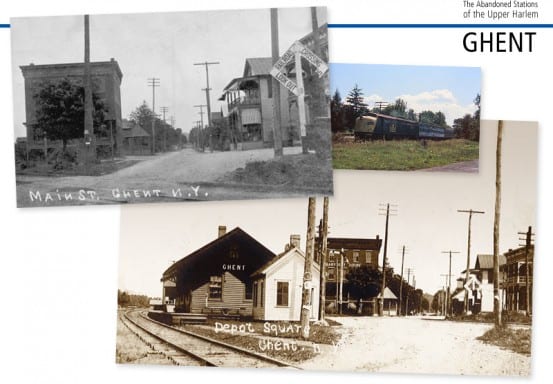
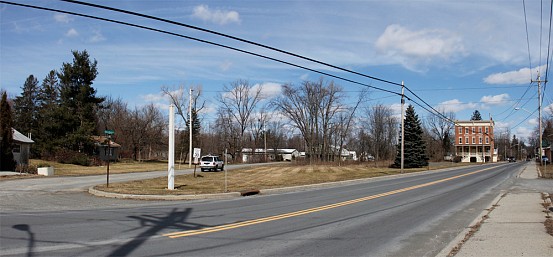
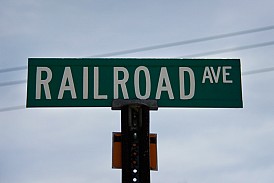

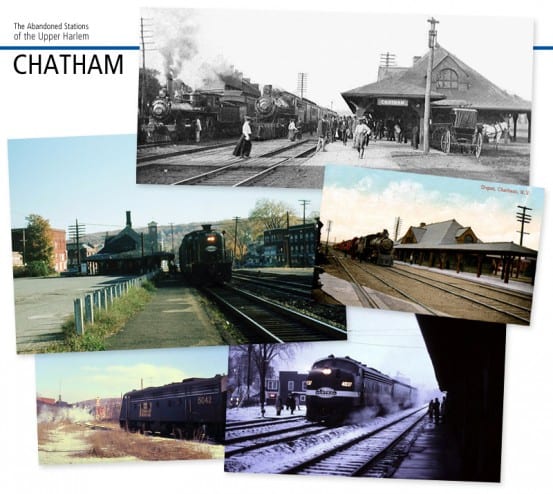
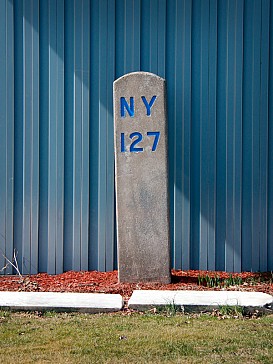
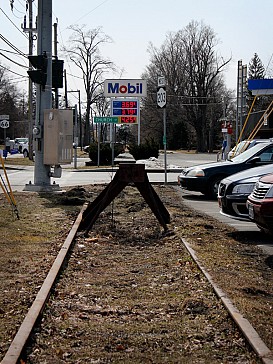
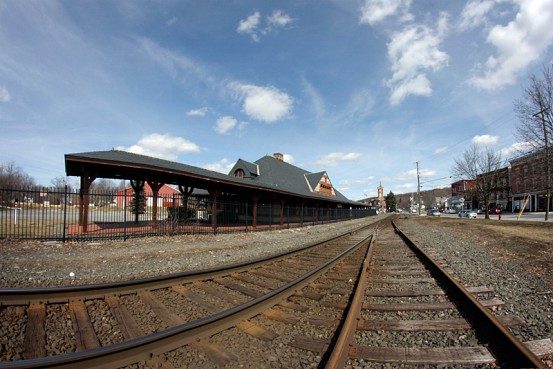
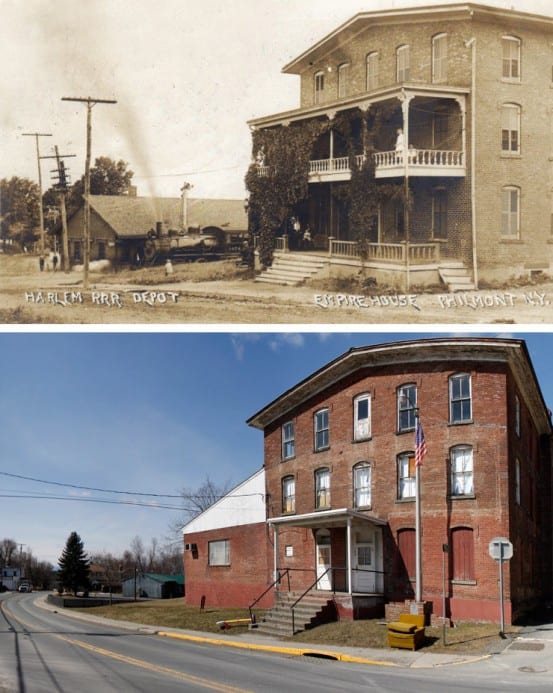
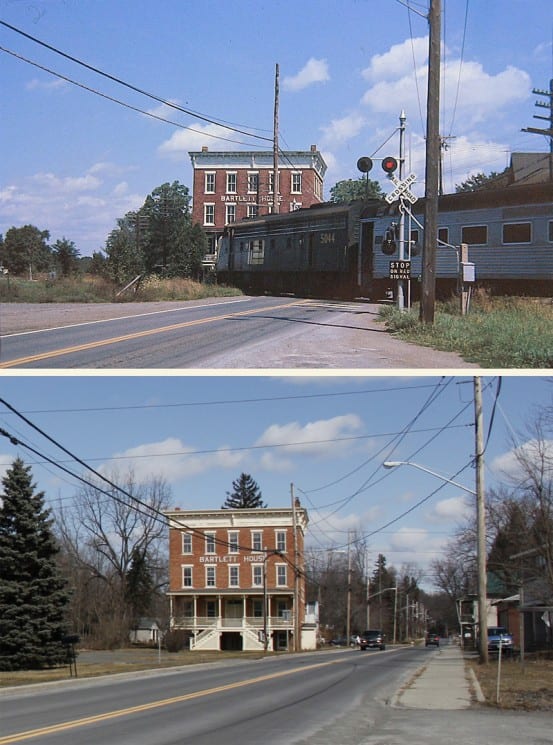
It’s funny what the names of some towns connote. I can’t read of Philmont, NY, without remembering that it’s the hometown of Lt. Col. Ollie North (of Iran-Contra infamy).
Hi Emily, not sure why my comments won’t post on your blog? Any help appreciated, James.
Hmm… for some reason they were being flagged as spam. I don’t think they will be anymore, but if they aren’t showing up again, let me know!
Yep, that fixed it! Thanks Emily
I really enjoy your blog Emily, also I liked your story about Grand Central Terminal in the March issue of Railfan and Railroad magazine!
Thanks!
The Boston + Albany used a short streach of the Harlem Line to Ghent,
(Tower/Cabin BA) then the B+A branch wandered southwest toward Claverack,
ans finally connected with the Hudson Line at Hudson.
Till 1937from Cabin BA to Chatham was double track,the B+A “Hudson”
branch exisited till the late 1960’s when Ghent-Claverack trackage was pulled up.
I have long thought that we need the upper Harlem line back. The Hudson line gets flooded out too easily. The upper Harlem is the only route out of New York City which isn’t prone to flooding.
As always your articles are brilliant Emily. My grandfather was a conductor who worked on the Harlem Division and, along with my grandmother, lived in Chatham on Railroad Avenue. Visiting them in the 50-60’s (as a young kid!) was a special treat as the trains ran right in front of the house.
I can’t find any evidence of the old bridge over NY 23 between Craryville and Martindale. I looked on Google Street View and saw nothing. Not even an embankment. Where was it?
Pop the following coordinates into Google street view: 42.207811,-73.629084. It is kinda hard to notice just from looking at the sat maps, so street view is easier to see it.
Oh, yeah. That worked. My stupid PC made me scan more than just the coordinates, and I had to hold the backspace button for a while once I posted them there, but I found it anyhow.
Dan the bridge in Martindale crosses COUNTY ROAD 11 north of route 23, on the road to Philmont.
Emily , I have vintage blueprints of the signal-system on this particular section of the Harlem Line ; included is the gates where the CNE crossed the Harlem Line at Millerton; you are most welcome to contact me if this is of interest to you; Thanks!!!.
would like to own a timetable showing all the former stations. Any idea where i can get one?
Try ebay, that’s where most of mine have come from.